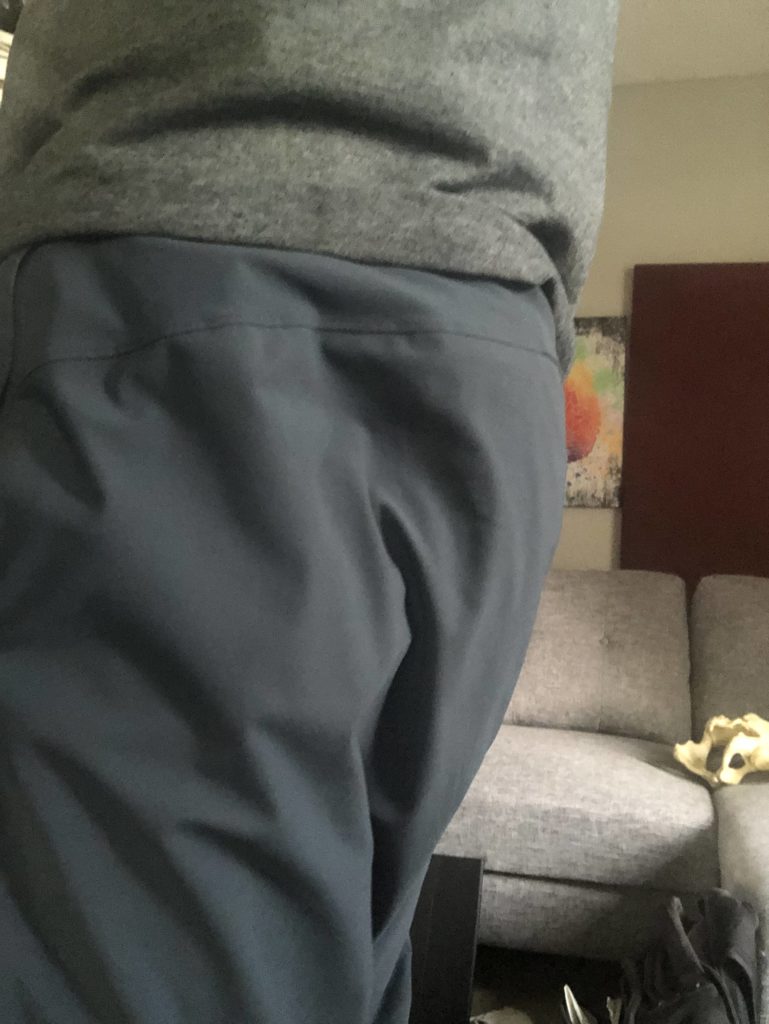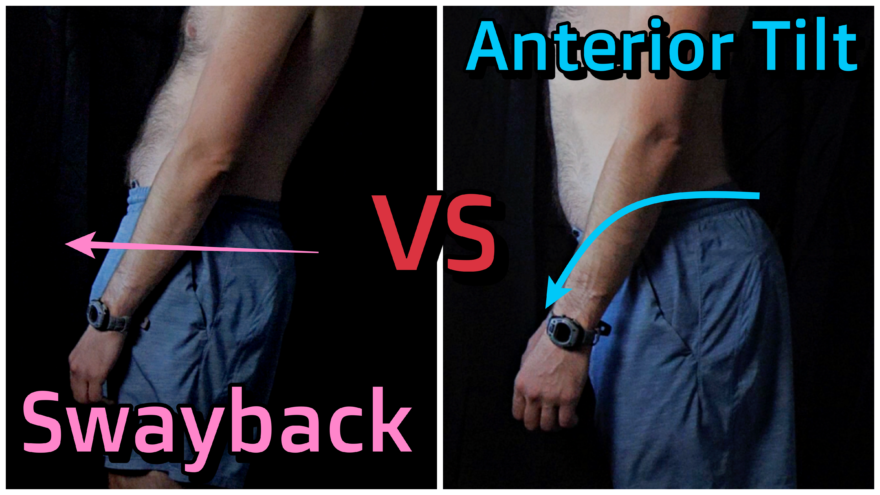Table of Contents
Are these pelvic postures a problem?
It’s common for people to have significant pelvis postures that may impact movement capabilities, but how do we know when these postures are problematic? What can we do about maximizing the movement of someone who has an anterior pelvic tilt or swayback?
Or heck, maybe you can’t even tell the difference between an anterior tilt and swayback posture. Where should you start?
Well fam, you should start by peeping Movement Debrief 163!
Show notes
May 7th-8th, 2022 – Buffalo, NY (Early bird ends April 16th at 11:55 pm)
August 6th-7th, 2022 – Boston, MA (Early bird ends July 16that 11:55 pm)
The difference between anterior pelvic tilt and sway back
Answer: Indeed it can, and that, my friend, is the difference between a swayback and anterior pelvic tilt.
The difference between anterior pelvic tilt and sway back
Answer: Indeed it can, and that, my friend, is the difference between a swayback and anterior pelvic tilt.
With an anterior pelvic tilt, the pelvis orients more downward, which would create a concentric orientation/short position of the hip flexors and back extensors:

Now, as a resting position, this posture is fairly common. In fact, according to this study, 85% of males and 75% of females present with an anterior pelvic tilt. So it’s not that the posture itself is a problem per se.
What can be an issue if this orientation is the only option you have available. If you have a difficult time creating a posterior pelvic tilt, it may be a contributing factor to having movement limitations.
What limitations am I talking about?
I’M GLAD YOU ASKED!
When the pelvis tilts anteriorly the acetabulum, the hole in the pelvic bone that houses your femur, orients more towards an internally rotated position. This action can allow you to pick up more internal rotation at the femur, but it comes at the cost of relative motion at the femur. Oftentimes, you’ll see a drop off of external rotation in this case.
You can see this manifest quite easily at the shoulder. If you try to internally rotate your shoulder and anteriorly tilt your thorax, it’ll appear as though you have more internal rotation available, but it’s merely an illusion.
Conversely, if you do this thoracic magic trick with external rotation, it’ll give the appearance that your shoulder external rotation is reduced.
We didn’t change anything at the shoulder joint specifically, we changed the orientation of the axial skeleton, which impacts where we can and cannot move.
This same concept applies at the pelvis. If I anteriorly tilt the pelvis, I’ll present with the following situation:
- Increased internal rotation measures
- Decreased external rotation measures
- If anterior enough, can create a straight leg raise that is in the normal or supraphysiological range (70 degrees and above)
What is a swayback posture?
The swayback is a bit closer to a posterior pelvic tilt, but not quite.
With anterior pelvic tilt, we saw musculature that was above the greater trochanter creating a forward push. That doesn’t happen here.
Instead, musculature below the trochanter tips the pelvis somewhat posterior but also creates a forward translation. This action gives the pelvis the appearance of being more forward in comparison to the thorax:

Again, this posture is also present in asymptomatic studies, albeit less common: 6% of males and 7% of females. So we cannot say that this specific posture is causing all the problems in your life.
The issue, as you might expect, happens if this orientation is your only option. The movement that can drop off with this posture is as follows:
- Increased external rotation at 90 degrees
- Limited hip flexion
- Decreased internal rotation measures
- Can often have a signifcantly limited straight leg raise and/or toe touch
These limitations manifest in a similar circumstance as with the anterior tilt. The posterior tilting actions orients the acetabulum more towards an external rotation position, allowing external rotation to occur, which can create a concentric/short orientation of all posterior musculature (aka the booty stuff).
If your glutes have a significant amount of tension, just like that one time you went all out at Chiptole, their muscle action can push the pelvis forward.
How can I improve an anterior tilt?
Regardless of which presentation you have, you basically want to teach yourself or your supreme clientele to go the other way.
So if I have an anterior pelvic tilt, I need to teach a posterior pelvic tilt, I need to stack. I NEED to talk to Zac (please talk to me!)
However, not any ole position is going to be useful.
Consider the movement limitations that present with this particular orientation. There is a drop-off of external rotation measures. A measure we ever so desperately need.
To improve external rotation, we want to work on stacking in ranges that will promote external rotation. 0-60 degrees of hip flexion can be money here, which is why I’ll start most of these peeps in the hooklying position:
From here, you can progress to a supported squat position that is fairly high depth, following the same principles
The pinnacle for these peeps will be progress squat depth while maintaining vertical pelvic displacement Something like a Zercher squat can be useful here:
How can I improve a swayback?
The swayback is a bit of a tougher case here. Stacking can be uber tough because of the tension that the glutes will create. Instead of getting that nice curl under we like to see with the pelvic tilt, they’ll just squeeze their cheeks even harder!

Well crap, what can we do here? They are totally screwing up like the most important move EVER.
Channel your inner Usher here folks, because we are about to take it nice and slow. We need to teach these supreme clientele to move with less tension at the start. They need to be able to disassociate moving their pelvis without engaging the glute to a high degree.
We need them to roll.
Rolling really slow and methodically can be quite helpful at reducing glute tension when they perform pelvic movements. It’s been one of my go-to’s as of late.
The keys with these types of rolls are as follows:
- Nasal breathe throughout
- Move with as little tension as possible
- Be segmented, no log rolling
- Keep the effort level at a 1-2/10.
You may want to start with something in a bilateral stance first to minimize the difficulty. Pelvic rolls are pretty good:
From here, you can progress to something a bit more unilateral, such as the foam roller ER roll
Once you’ve gotten some external rotation to open up (via hip flexion and straight leg raise), you’ll then want to progress the toe touch to really get these puppies to chill. This toe touch variation has been MONEY in that regard:
Once you’ve got hip flexion and toe touch to open up some, stacking drills are likely the next go-to.
Rectus abdominis activity in the swayback
Question: What role does the rectus abdominis play in the swayback posture? Are they upper ab grippers?
Answer: If you think about the pelvis going WAY forward, the body will likely need to bring something WAY backward to stay upright.
In this case, the thorax is what ends up coming backward, and it does so by the sternum being pulled downward by rectus (damn-near killed us) abdominis. Rectus is also a weak posterior tilter of the pelvis, so you get a 2-for-1 (a twofer as we say in the Midwest) here.
To improve this situation, you’ll need to do things that will create expansion of the anterior aspect of the thorax and ab wall. Doing something either in prone or even on elbows can be helpful, like this move:
A swayback person who can palm the floor
Question: Swayback palming the floor. Are those long hamstrings or spine flexion? How would you differentiate?
Answer: To touch my toes, I need posterior expansion, sacral dynamics, and muscles below the trochanter to eccentrically position.
With the swayback posture, sacral and below trochanter dynamics are not an option, so what is?
Either excessive bend through the spine or external rotation through the leg to bypass the internal rotation needs at 90 degrees of hip flexion.
Stacking with a swayback posture
Question: Do you suggest using a towel roll under the lower back when working with a swayback in the supine position? How do you get them to feel hamstrings without glute gripping?
Answer: As we had mentioned previously, you need to teach your supreme clientele to be eccentric AF on the backside. So rolling and toe touch progressions are the first place to start. You may even need to go with anterior expansion to get the rectus to chill.
Once you’ve done that, then stacking drills might be useful. The first option would be to first go with something in sidelying, as this will promote anteroposterior expansion. Sideliying tilts could be money here:
You could also use single-leg exercises to induce rotation, which can also create anteroposterior expansion. A sidelying stride could be good here:
Knee hyperextension with swayback posture
Question: What if a swayback person has hyperextension and foot supination?
Answer: If the pelvis goes too far forward, the knee will hyperextend to attempt to get a posterior weight shift. This will create the posterior expansion that a swayback person needs, just in an undesirable fashion.
Sum up
- Anterior pelvic tilt is when the pelvis dumps downward, and leads to external rotation loss
- Swayback is when the pelvis tips slightly posteriorly but also translates forward, leading to flexion and internal rotation loss
- Both postures are “normal,” but can be problematic if movement limitations persist are worth improving
- Anterior pelvic tilt motion can be improved with stacking
- Swayback motion can be improved with rolling and toe touch progressions
- If there is a signficant down pump handle, expanding anteriorly could be another option for a swayback posture
